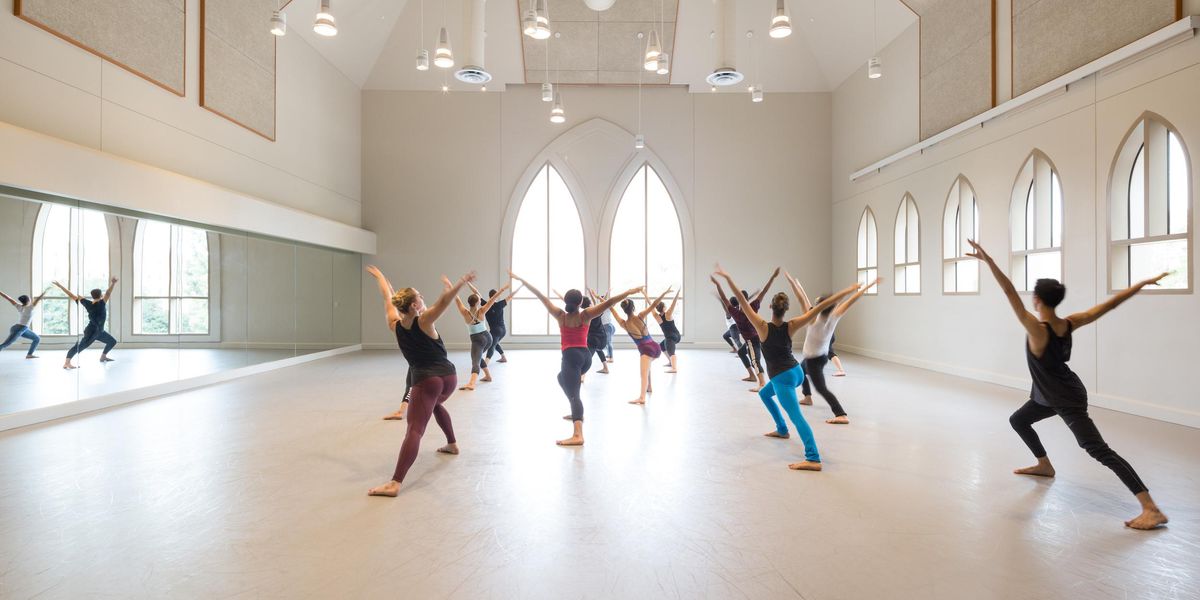Paul Taylor Dance Company
Paul Taylor Dance Company
David H. Koch Theater
Lincoln Center, NYC
March 13—April 1, 2012
Performances reviewed: various
For the first time in its 58-year history, Paul Taylor Dance Company performed its annual New York season at Lincoln Center’s Koch Theater after decades at City Center. In this more spacious venue, the 22 dances performed over three weeks seemed to expand to fill the larger house. It took some time to get used to the added distance from the dancers, but ultimately the venue showed Taylor’s work to the fullest. Among the highlights were older or infrequently revived works including Big Bertha, Junction, and Aureole.
Three dances premiered. House of Joy is an unvarnished sketch of a mid-20th-century brothel. As much moving theater as dance, and with little plot, its incisive characterizations were memorable: an unrecognizable, normally robust Rob Kleinendorst as a hobbled old man; Laura Halzack as a jaded, savvy courtesan; and Michael Apuzzo as a hustling pimp.
Laura Halzack, Michael Novak and Michael Apuzzo in House of Joy, Photo by Paul B. Goode, Courtesy PTDC.
The Uncommitted,
to music by Arvo Pärt, suggests that while we are ultimately alone, we still belong to a community. Several individual portraits are joined by inventive group sequences to move each soloist on and off stage. The soloists’ demeanor ranged from resignedly lonely to despondent, employing Taylor’s emotionally expressionistic gestures. Santo Loquasto designed the variegated, autumn-hued tunics, and Jennifer Tipton the lighting schemes.
Robert Kleinendorst in The Uncommitted. Photo by Rick McCullough, Courtesy PTDC
Loquasto also created the fantastical designs for Gossamer Gallants, including a lavishly painted pinwheel view of a village and superhero-style bug costumes—the men’s blue-black iridescent carapaces, the women’s caterpillar green. Silly fun, the dance also depicts the cutthroat life-or-death aspect of insect life, a long held fascination for Taylor. In this case, females dominated, terrifying as they hunted down the braggardly males. The game dancers threw themselves into the slapstick chases and confrontations, rendered more cartoon-like with some of Taylor’s flattened, “primitive” lexicon, resembling the iconography on Greek urns.
This year’s revivals were a particularly rich selection. One program alone featured Oh, You Kid!, the portrait of small-town America evoking the mixed pleasures and threats of carnivals and the KKK; House of Joy; and Big Bertha (1970), a terrifying snapshot of a Cleaveresque family (Michelle Fleet, Michael Trusnovec, Eran Bugge) becoming possessed by a sadistic mechanical ring master (Amy Young). After intermission, the same four dancers startingly fronted the joyful prologue of Esplanade (1975). Talk about headspinning.
The revival of Junction (1961) was astutely juxtaposed with Aureole (1962, featuring Trusnovec in Taylor’s famous solo), which celebrates the strong bones of Taylor’s essential lyrical dance vocabulary in a serene, spacious framework. Junction is more sculptural and experimental in feel, with Alex Katz’s tropical bird–hued leotards and cage bar backdrop. The movement sometimes sings with the accompanying Bach cello suites, and sometimes bridges the silences. Through this dance, you could see Taylor in context with his older peer Merce Cunningham. And the intriguing House of Cards (1981), while time-stamped by the costumes, featured a queen (Heather McGinley) controlling her court as it moved through jazz-inflected phrases in front of a vibrant scrolling painting. Also on this bill was 3 Epitaphs (1956), a delightful snapshot of mud people seemingly content despite their dejected body language.
Michael Trusnovec in Aureole. Photo by Paul B. Goode, Courtesy PTDC.
The season included several large-scale classics. Mercuric Tidings (1982) is one of Taylor’s sleekest, fastest dances, in which the performers require martial art precision and speed to stay on tempo. But it reveals poignant details: When Amy Young slipped her hand atop Trusnovec’s at the last second, the heart caught, and the “dancing fountain” moving tableau finale then made that heart sing. Promethean Fire (2002) looked sharp after a hiatus; now featuring the riveting Parisa Khobdeh partnering Trusnovec, it has regained crispness and lucidity. And Cloven Kingdom (1976), by turns elegant and ferocious, remains one of Taylor’s greatest achievements.
Trusnovec—razor sharp or sublimely gentle (as in, respectively, Syzygy and Beloved Renegade), embodying the prototypical Taylor style—features prominently. Amy Young and James Samson have quietly and deservedly become ubiquitous; both are strong, plush, tall dancers who are generally amiable but can turn dark on a dime. Laura Halzack’s tensile line is peerless; Michelle Fleet and Eran Bugge dance with wit, warmth, and generosity; Khobdeh ranges from hilarious to glamorous; and Jamie Rae Walker has a wild funny streak. Newer dancers hold great promise, notably the lyrical McGinley and refined, big mover Michael Novak. Given the breadth of the repertoire, they are all protean.
People can favor one subgenre of Taylor’s oeuvre over another, and when he has created masterpieces on a regular basis over the course of nearly six decades, his lesser works might disappoint. But the choreographer’s significance can be best appreciated by surveying his repertoire as a world unto its own. The lyrical, formal, satirical, zoological, romantic, sadistic, and bizarre dances collectively amount to a searing account of being human, for better or worse.




